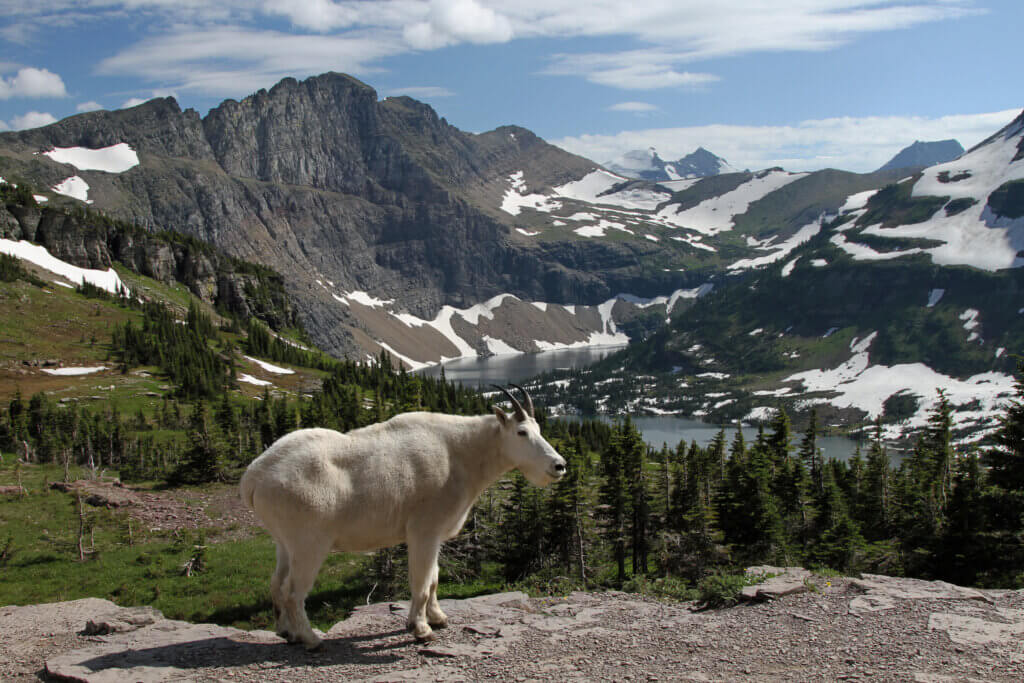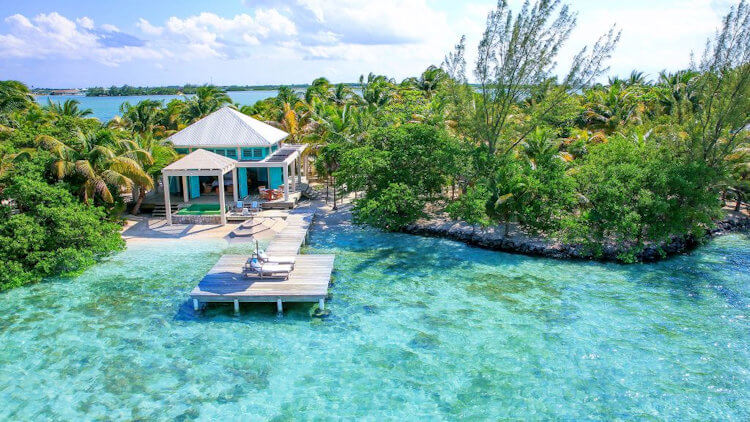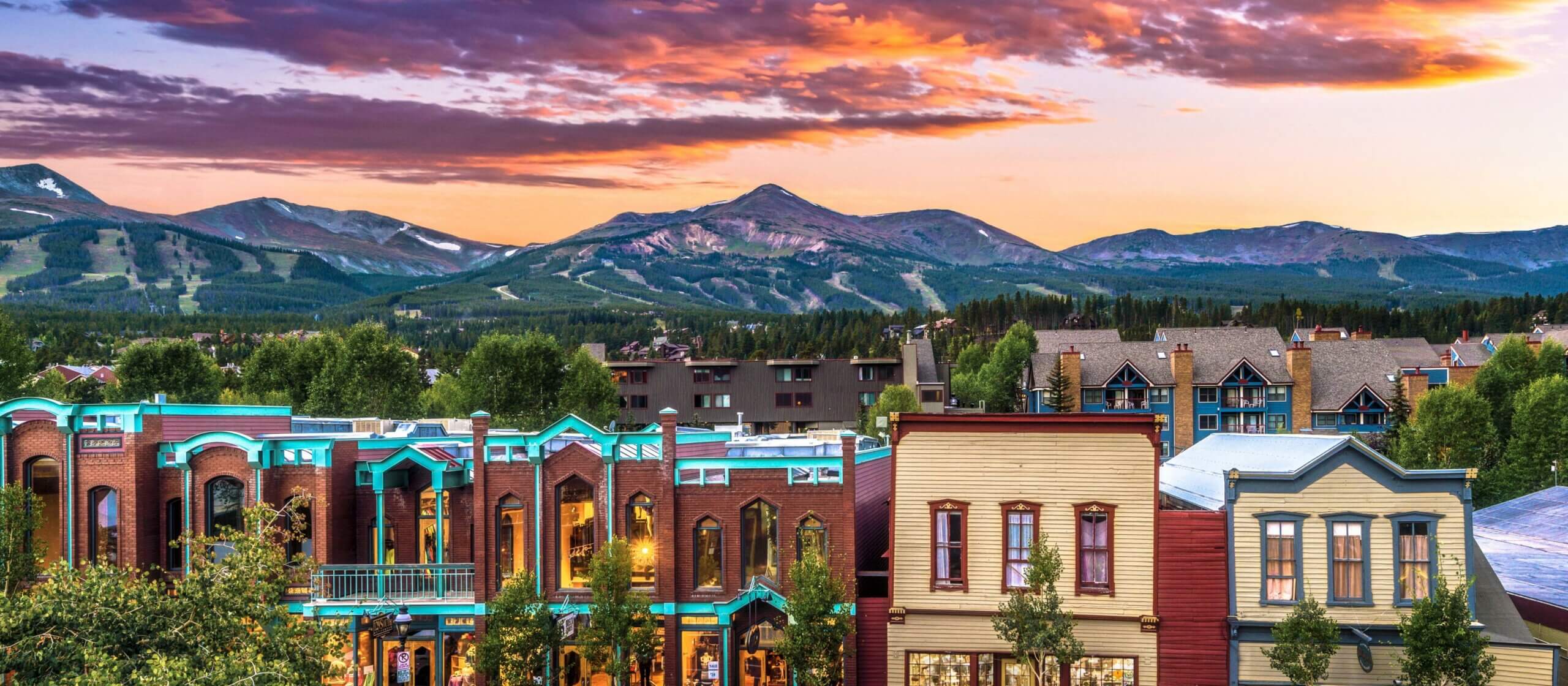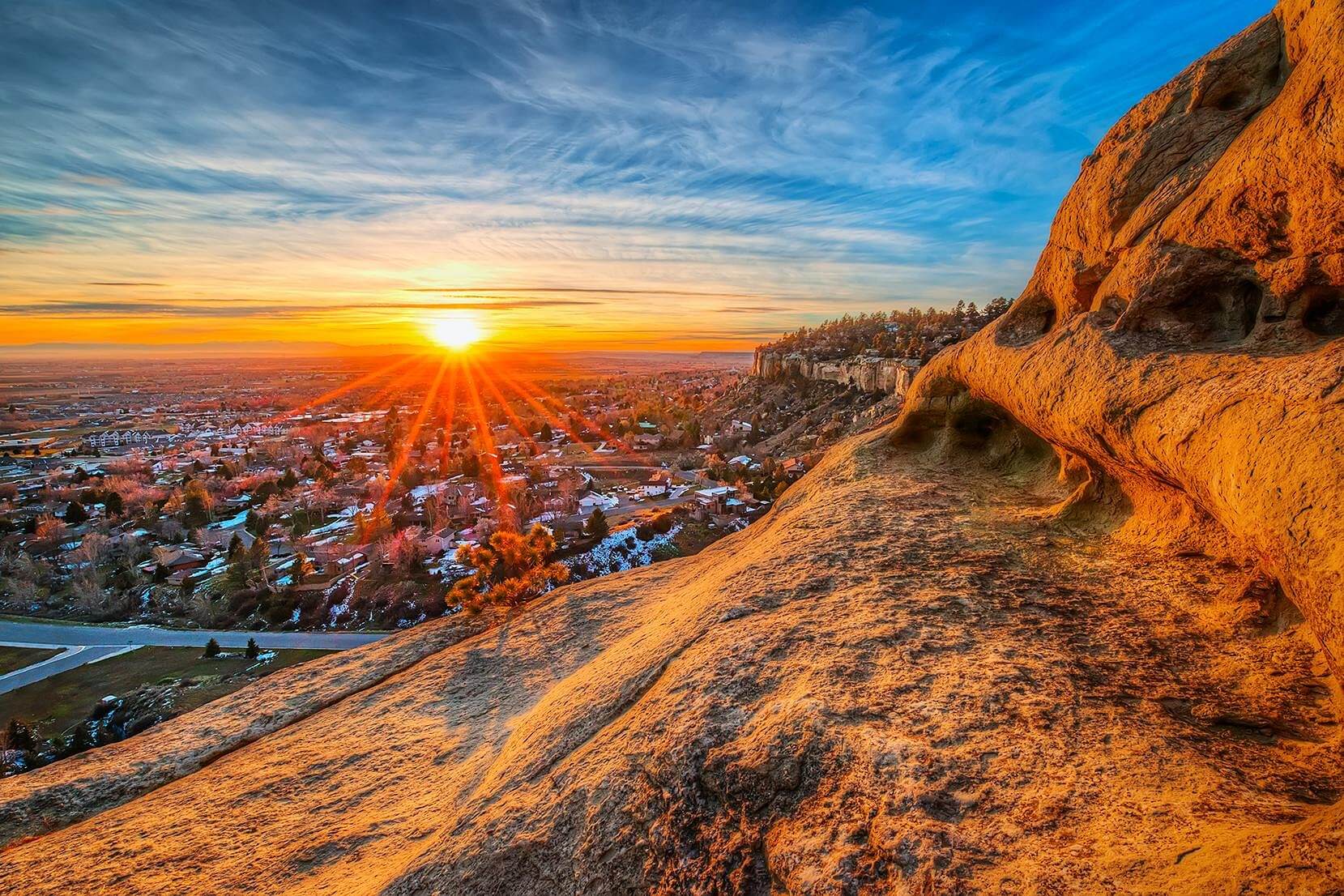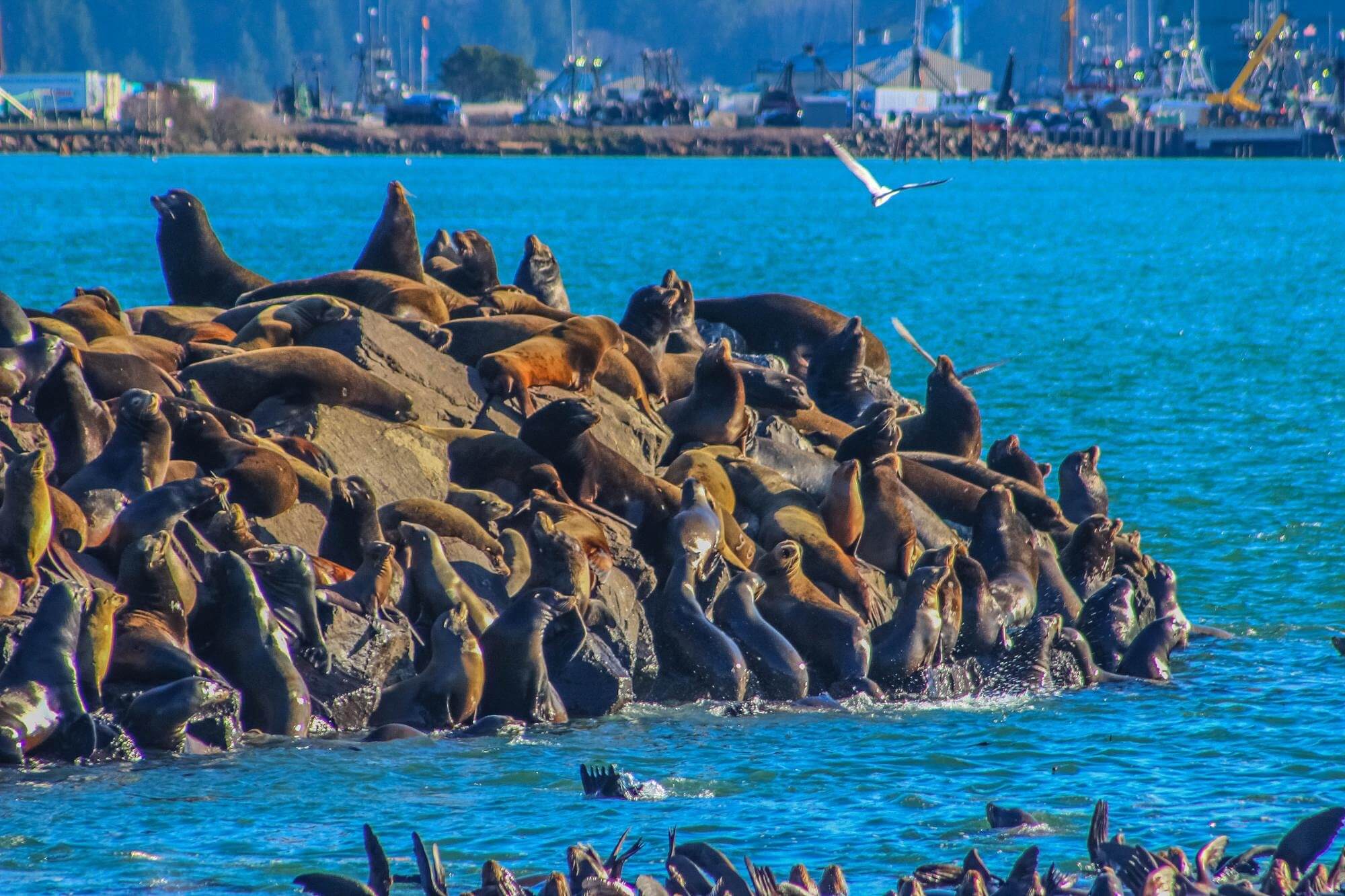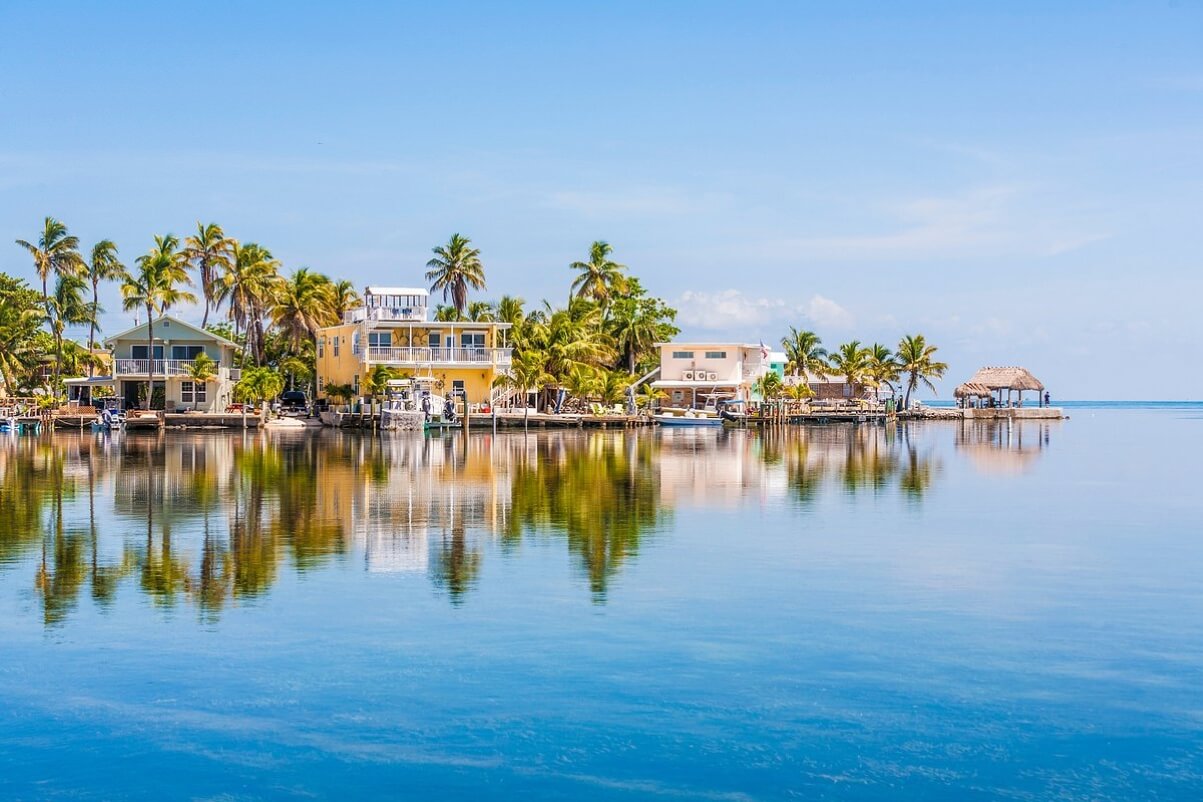Glacier National Park is a beautiful destination to head to and explore, and if you are set on camping, there are more than 10 campgrounds in, and just outside, the park to choose from. Some are primitive, seasonal, and accessible only to tent campers bringing in their own water; others are more developed, with year-round showers, drinking water and accessible to the wheelchair-bound and those staying in RVs or with trailers.
The most important thing to keep in mind is that Glacier’s beauty tends to draw big crowds, and campgrounds do fill quickly. You might enter the park at 10.30am on a Monday and be told by a ranger that all campsites are already full! Sites are usually booked up by noon – so make reservations when you can, and when you can’t, get there early and stake your claim on a site as soon as it comes up!
Also note that Glacier’s weather is highly variable, and it can get extreme. Warm days and cool nights are the norm in summer, and even when it’s in the 80s and 90s during the day, it can cool to the 40s at night. Take rain gear and lots of extra clothing, as dressing in layers is the best way to ensure a comfortable visit, whatever time of year you go.
Many campgrounds at Glacier National Park are available by reservation and can be booked on Recreation.gov, and in these cases, you should book your site BEFORE getting there (ideally up to six months in advance!), as in all campgrounds below, there is no Wi-Fi and cell service is almost non-existent – consider this a true escape from your day-job!
The park also has some first-come, first-served campgrounds, but, again, these fill quickly in summer (and many aren’t even open off-season) and you might find yourself in a line waiting for a spot to free up.
The standard check out time is 12 noon, and if you decide you want to stay longer, you should re-register by 11am.
The Glacier Bears And Some Safety Tips
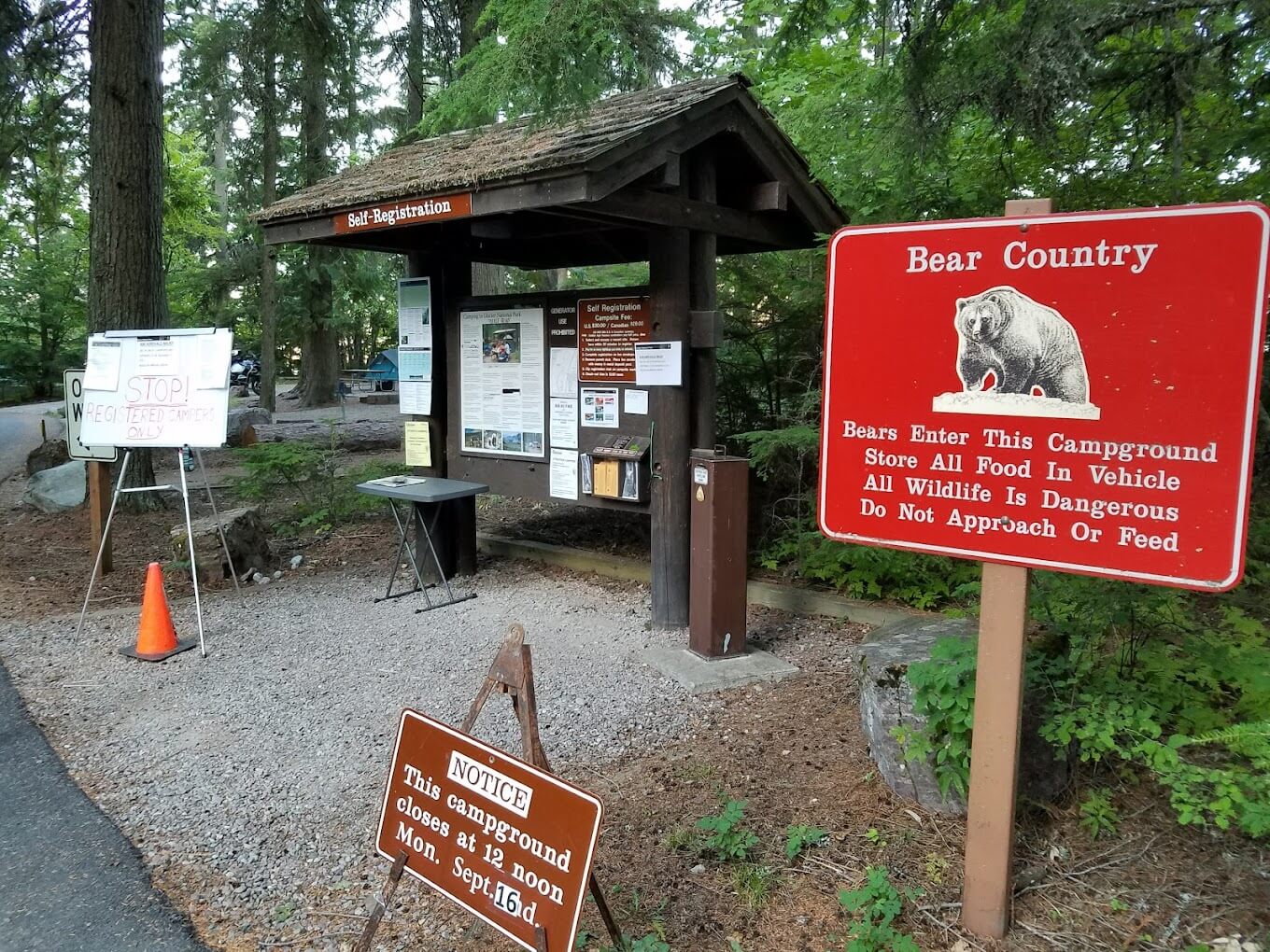
When many people think of Glacier, they think of bears. Glacier is the core of one of the largest remaining grizzly bear populations in the lower 48 states, and you are almost guaranteed to see them (or black bears) while camping there – in some cases very up-close-and-personal! Intentionally approaching, viewing, or engaging in any activity within 100 yards of bears is prohibited.
Here are some safety tips to prepare you for your stay in Glacier National Park:
- If a bear is moving in your direction on a trail, get out of its way and let it pass.
- If you can move away, do it, but stop moving if your movement is agitating the bear (it will show this by swaying its head, huffing, clicking its teeth). NOTE: A lowered head and laid-back ears indicate aggression, but standing up on its hind legs is not necessarily a sign of aggression because sometimes they just want a better view! To help the bear recognize you as a friendly human:
- Talk quietly;
- Do not run! Back up slowly, but stop if that seems to agitate the bear;
- Try to look non-threatening: turn sideways, or bend at the knees to make yourself look smaller;
- Don’t look it in the eyes – bears may interpret direct eye contact as threatening;
- Continue to move away if you can.
- If a bear appears determined to approach you, your group, or your campsite in a non-defensive manner (not showing signs of agitation), bring your group together, make noise, try to discourage the bear from coming any closer, and get your bear spray ready. If you have food out, put it away. Don’t let the bear take your food.
- If a bear approaches in a defensive manner (looking agitated) or it charges at you, don’t run. Talk quietly to the bear as you get your bear spray ready. If it looks like there will be contact and you don’t have bear spray to deter it, you should protect your chest and abdomen by falling to the ground on your front. Clasp your hands around the back of your neck. If you have a pack on it will protect your back. If the bear tries to roll you over, try to stay on your front. If the bear’s attack is defensive, it should leave when it recognizes you are not a threat. If the attack is prolonged, you will have to fight back!
For more detailed information, read this article and watch the Bear Safety video at the bottom of the page.
Bear Spray
Bear Spray is a pepper spray that temporarily incapacitates bears. It is an effective, non-toxic, and non-lethal means of deterring aggressive bears.
Spray it into the face of a bear that looks as if it will attack you. It is not intended to act as a repellent, though, so there’s no point spraying gear or your camp with bear spray. Pre-sprayed objects may actually attract bears!
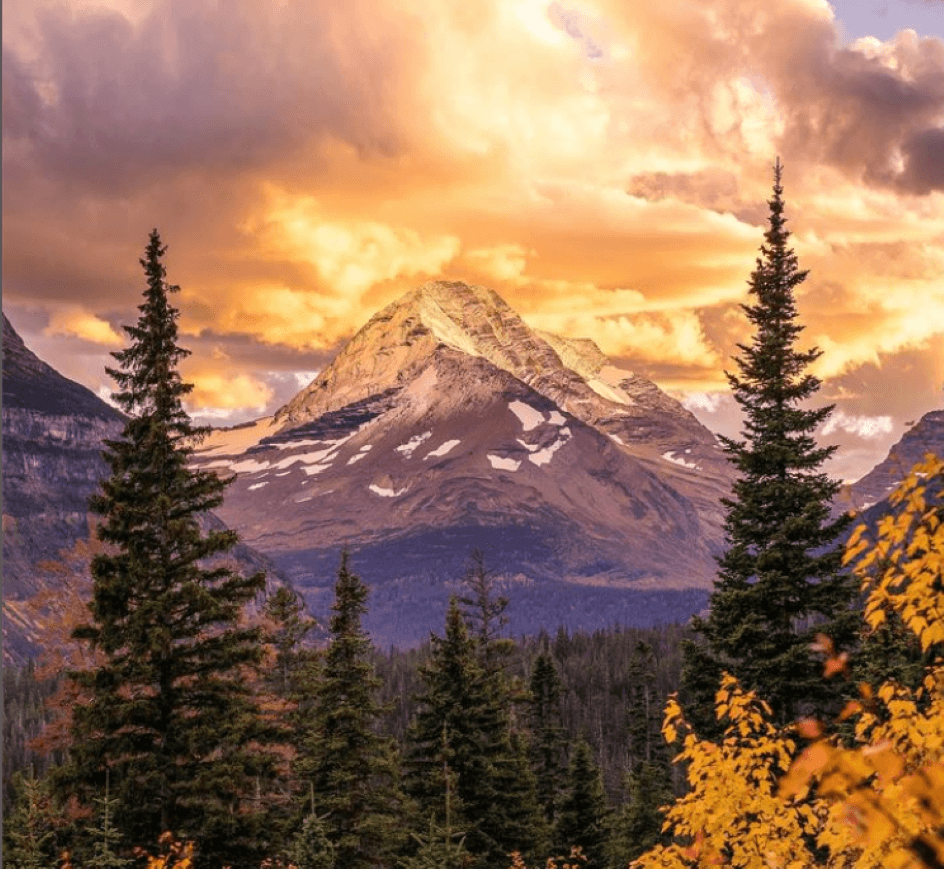
With that done, let’s now explore our choice of campgrounds in and around Glacier National Park. We’ve divided the list into two – First-Come, First-Served Campgrounds and Reservation-Only Campgrounds. It’s always advisable to reserve a spot in advance if you can, especially in summer. Whether you’re looking for primitive nights or comfort and hot showers – we got you covered. Let’s dive in and explore Glacier National Park’s camping options.
First-Come, First-Served Campgrounds
1. Bowman Lake Campground
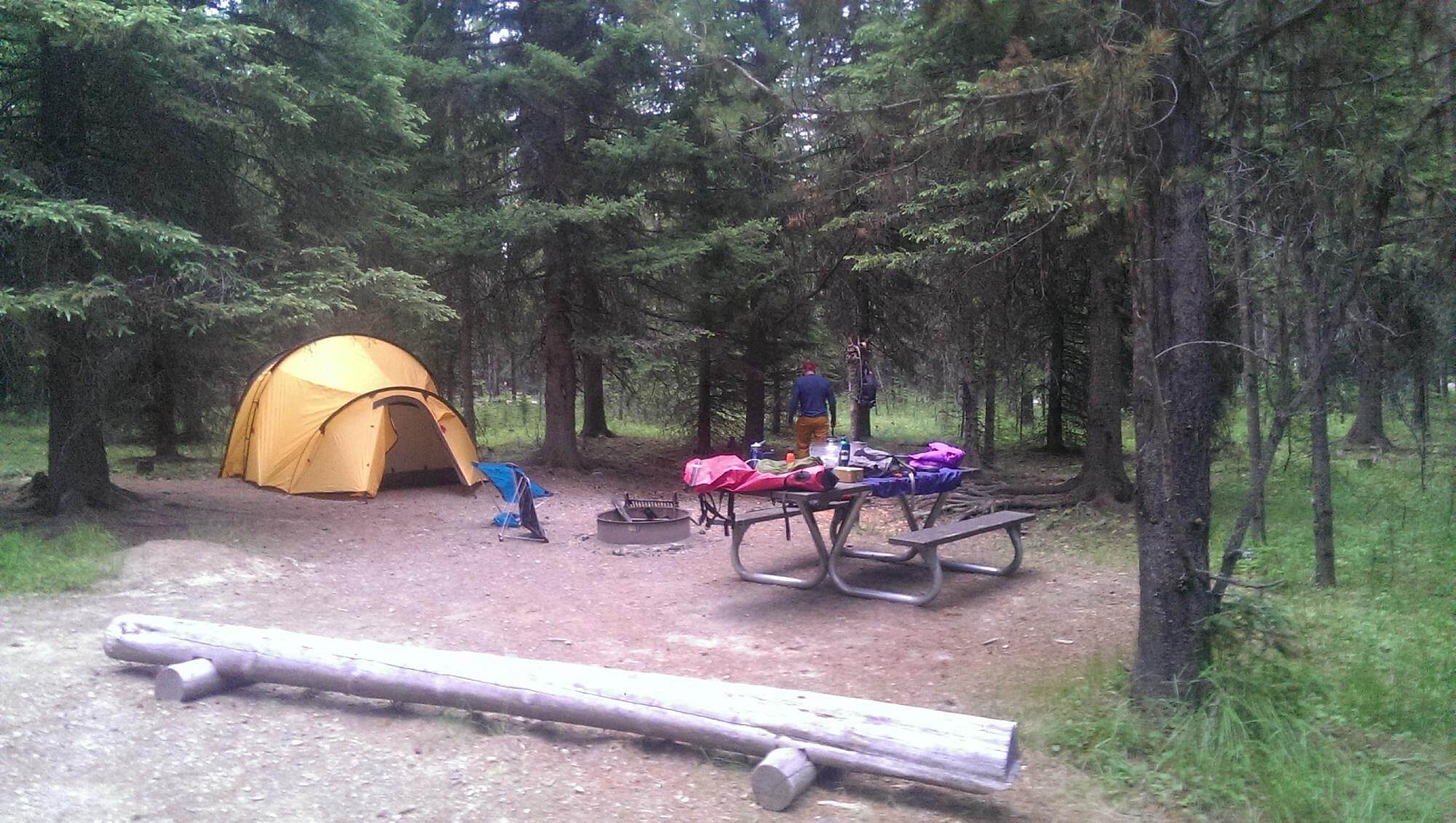
Getting to the tents-only Bowman Lake Campground involves a slow, dusty, and bumpy drive along dirt roads, but it is so worth it, as the campground is close to the lakeshore, under tree cover. Tent campers seeking tranquility and a remote location will appreciate this one!
The primitive campground operates on a first-come, first-served basis, usually closing after Labor Day. Visitors with kayaks or canoes can enjoy the clear waters and stunning mountain views. The area offers exceptional calm and beauty, being away from the main park corridor. NOTE: A vehicle reservation pass is now required for access.
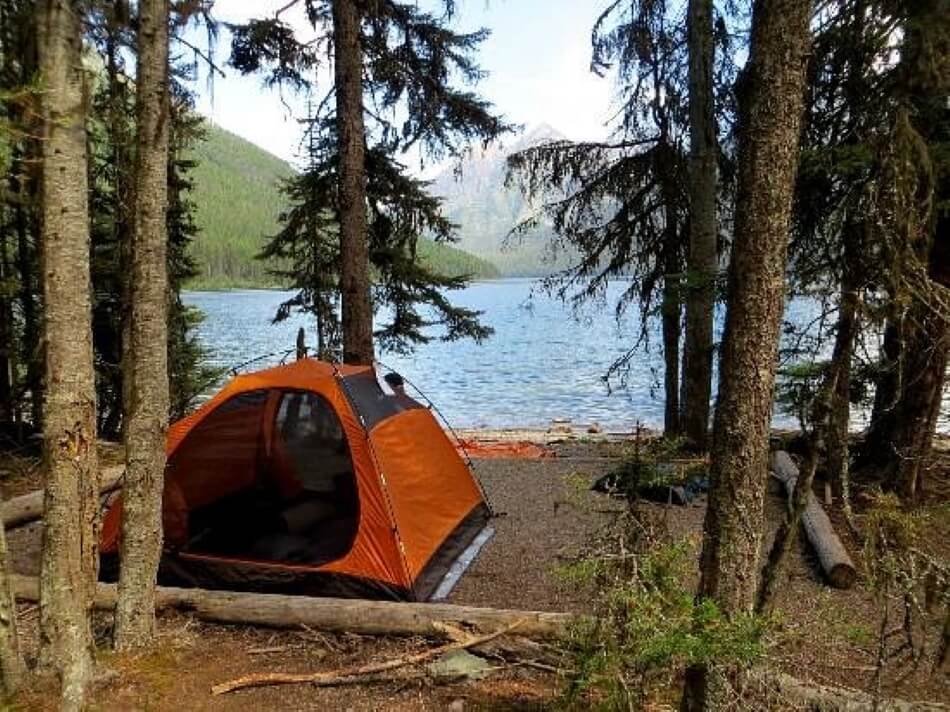
Total Sites: 48, each accommodating up to eight people and two vehicles, where space is available (maximum two tents per site). No RVs or trailers permitted.
Wheelchair Access: 2 campsites (#3, 7).
The campground offers seasonal pit toilets (not fully accessible), trash/recycling collection, food storage lockers, staff on site, a dump station, and drinking water. There are no showers.
There are picnic tables and fire rings, and you can use dead wood found on the ground along Bowman Lake Road to fuel your fire.

Bowman Lake Campground’s typical summer season is mid-May to early September. If weather allows, a primitive camping season extends campground opening into early September all the way to the end of October.
In the primitive camping season there are no drinking water or dump station facilities.
Fee: Summer: $15.00, Primitive: $10.00.
Where: in the North Fork area of Glacier National Park, approximately 32.5 miles from the west entrance.
2. Cut Bank Campground
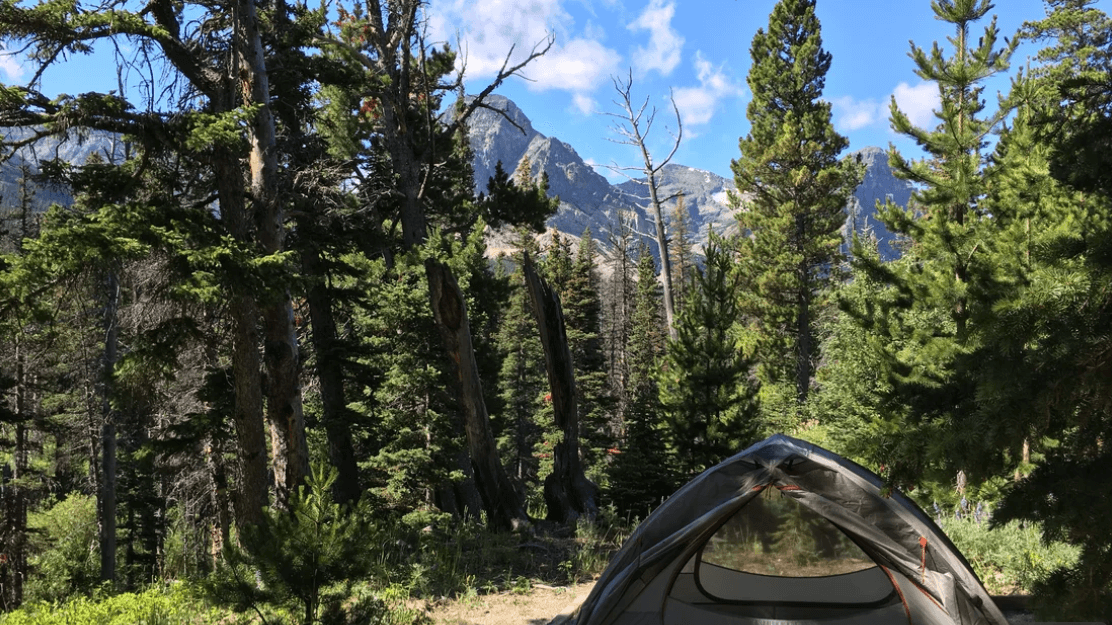
As primitive as you can get for an official campground, Cut Bank Campground, on the east side of Glacier National Park, offers peace and quiet among trees, which offer both shade and privacy – great for tent campers.
Total Sites: 14, each accommodating up to eight people and two vehicles, where space is available (maximum two tents per site). No RVs or trailers permitted.
There are seasonal pit toilets but no showers, and you should bring your own drinking water.
Nearby trailheads offer the chance to head off for a day of hiking, or for those heading off on longer backcountry trips.
The Cut Bank Campground operates from late May through mid-September.
Fee: Summer: $10.00.Where: Accessible via a 5-mile dirt road off Highway 89, near Starr School Road.
3. Kintla Lake Campground
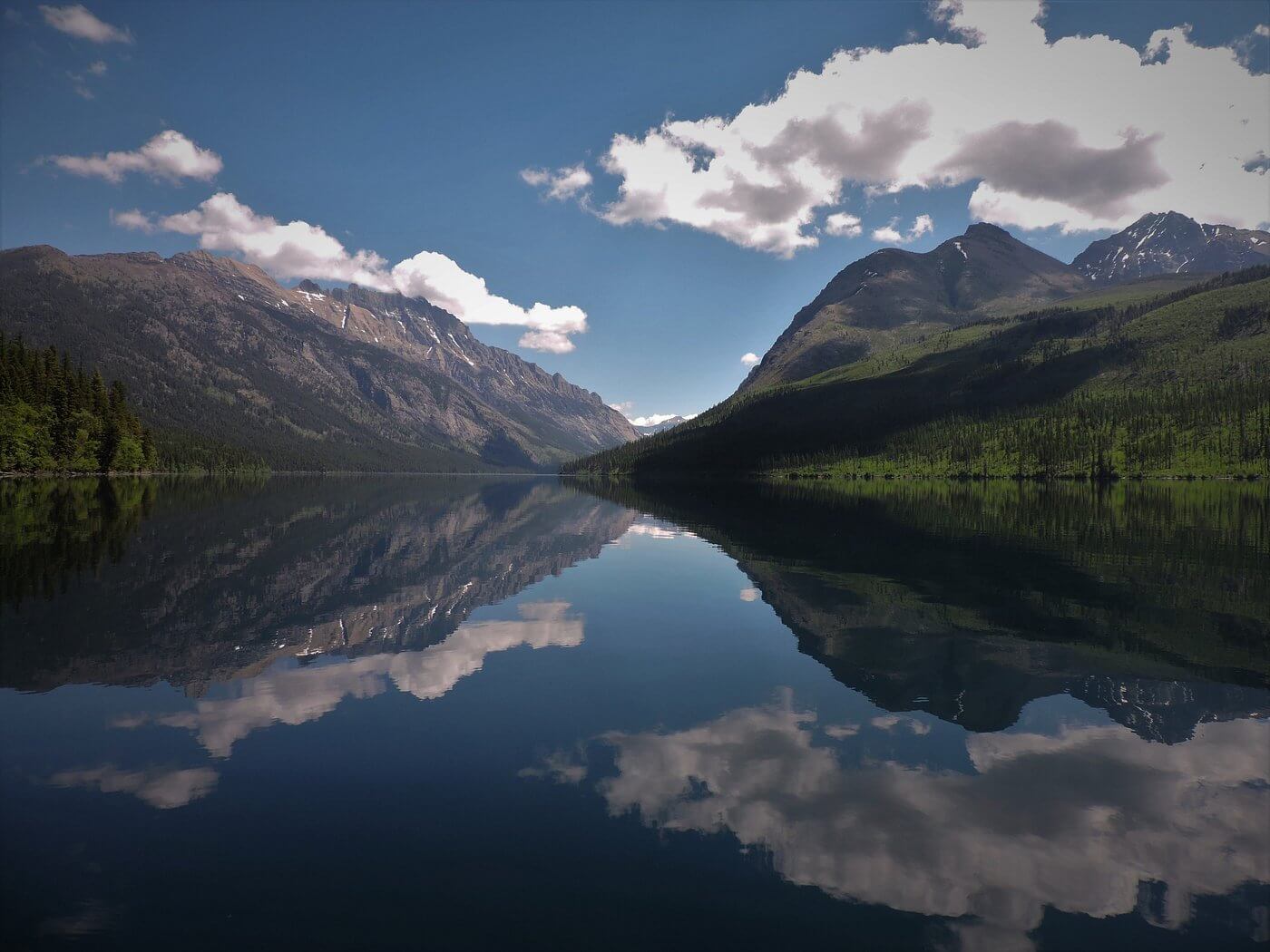
Kintla Lake, one of Glacier National Park’s northernmost lakes, offers breathtaking views and seductive solitude, and the campground is the most remote frontcountry and car camping campground there!
While a few hours of driving on bumpy dirt and gravel roads are required to reach it, the lack of motor boats and fewer people make it an excellent choice for kayaking. Kintla also provides a serene environment for picnics, camping, with golden Tamarack needles lining the lakeshore in the fall.
Be prepared for yellow jackets, garter snakes, and bear encounters. We recommend you have bear spray on your “must pack” list!
And another note if you are planning on water activities – watercraft inspections for invasive species are mandatory, and this will add some time to your journey getting there.
Total Sites: 13, each accommodating up to eight people and two vehicles, where space is available (maximum two tents per site). No RVs or trailers permitted.
Wheelchair Access: One campsite (#13).
The campground offers seasonal pit toilets (not fully accessible), trash/recycling collection, food storage lockers, staff on site, a dump station, and drinking water (hand-pumped). There are no showers.
There are picnic tables and fire rings, and you can use dead wood found on the ground.
Fee: Summer: $15.00, Primitive: $10.00.
In the primitive camping season, campers should bring their own drinking water.
Where: Kintla Lake Campground is about 14.3 miles from Polebridge, located in the uppermost northwest section of the park, approximately 40 miles from the west entrance and the Canadian border. Expect a slow and bumpy drive on dirt roads, passing through the tiny community of Polebridge and some beautiful scenery.
4. Logging Creek Campground
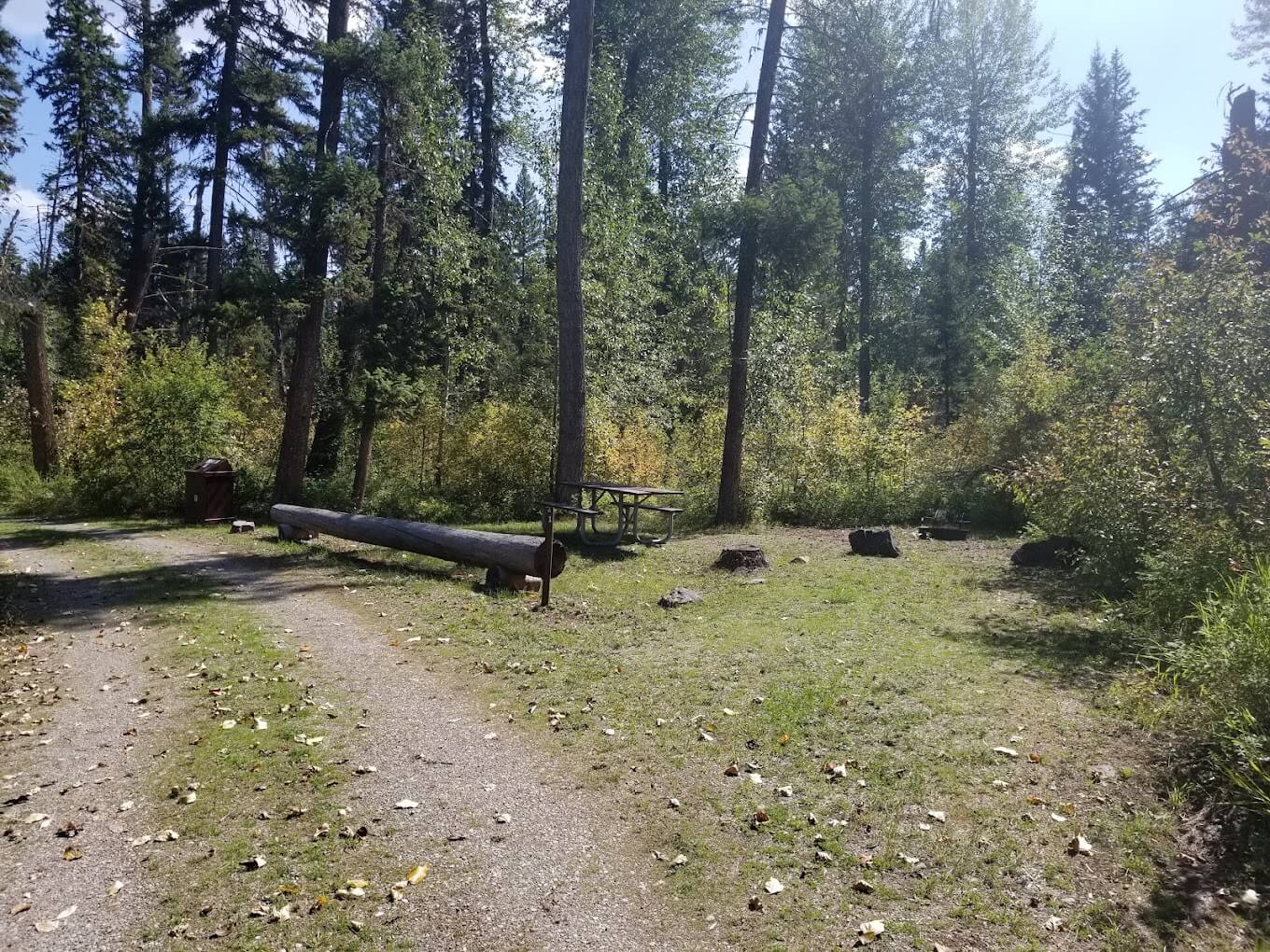
The primitive Logging Creek Campground, one of the smaller campgrounds in Glacier National Park, offers some real escape-the-world solitude, with deer roaming the campsites in the evening and gorgeous views over the lake.
Total sites: 7, each accommodating up to eight people and two vehicles, where space is available (maximum two tents per site). No RVs or trailers permitted. No wheelchair accessible sites.
The campground offers seasonal pit toilets (not fully accessible), trash/recycling collection and food storage lockers. There are no showers, dump stations or running water, except a pump from the creek.
There are picnic tables and fire rings, and you can use dead wood found on the ground for fuel.
Fee: $10.00.
The nearby Logging Lake trailhead leads to an easy family day hike.
Where: Located on the west side of the park, south of Polebridge, accessible via the Inside North Fork Road, a dusty, narrow, winding road – drive slowly and carefully!
5. Quartz Creek Campground
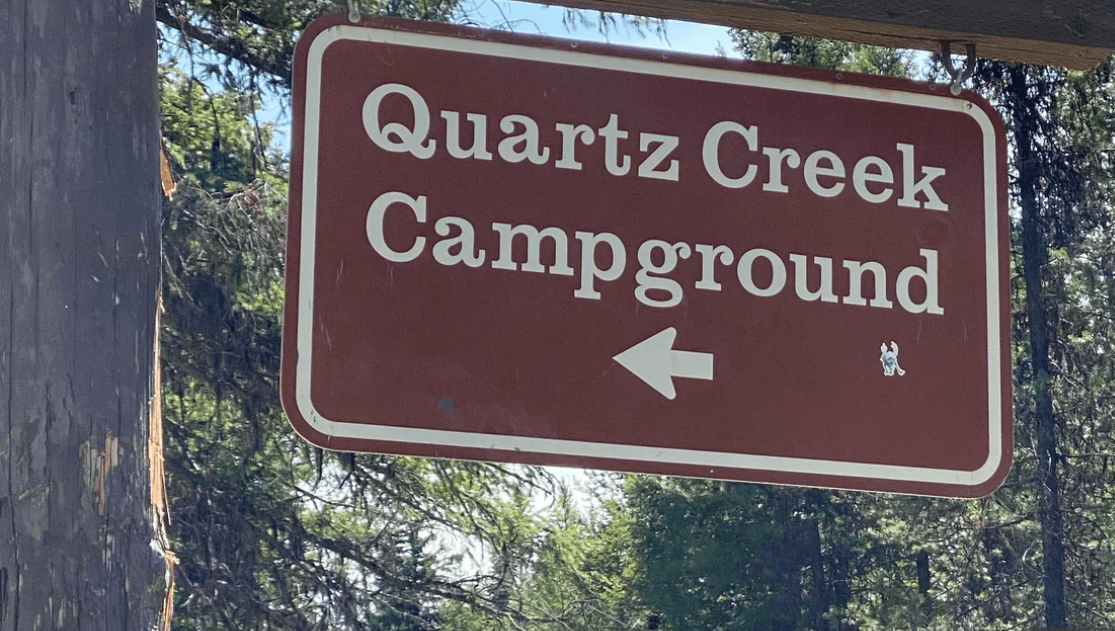
The primitive Quartz Creek Campground, the smallest campground in Glacier National Park, is accessed via a rough, dusty, dirt road with blind curves and few pullouts – be warned as you will have to work to get to this gem!
Expect thick forest and crystal-clear creeks – and watch out for wolves and bears – this is seclusion at its best!
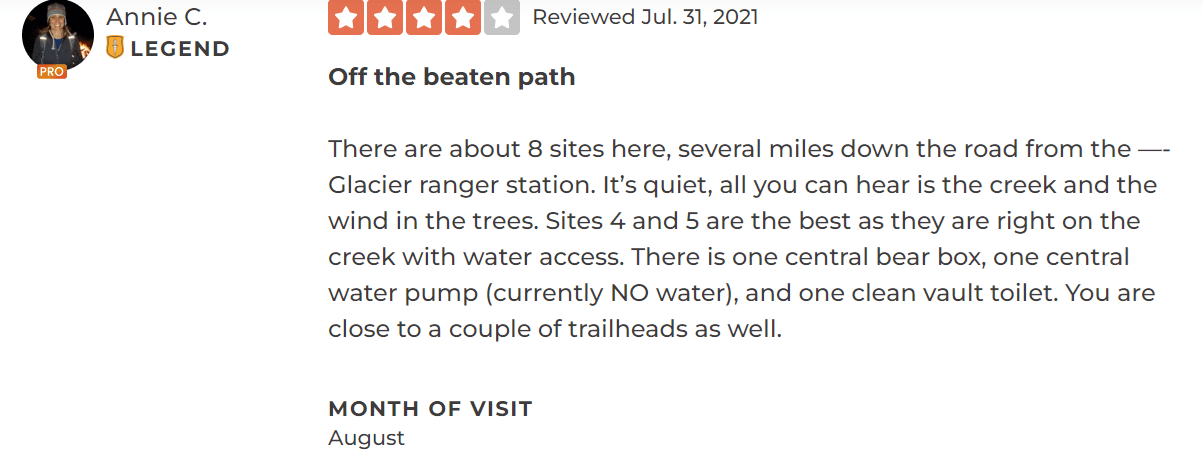
Total Sites: 7, each accommodating up to eight people and two vehicles, where space is available (maximum two tents per site). No RVs or trailers allowed.
The campground offers seasonal pit toilets (not fully accessible), trash/recycling collection and food storage lockers. There are no showers or dump stations. Bring your own drinking water!
There are picnic tables and fire rings, and you can use dead wood found on the ground for fuel.
Quartz Creek Campground typically opens at the end of June and closes in late October.
Fee: $10.00.
Where: Located on the west side of the park in the North Fork area, it is accessed via the Inside North Fork Road (max. speed 20 mph) and is several miles down the road from the Glacier ranger station. The drive can be long if traveling from Fish Creek, shorter if you’re coming from Polebridge (5.7 miles away).
6. Rising Sun Campground
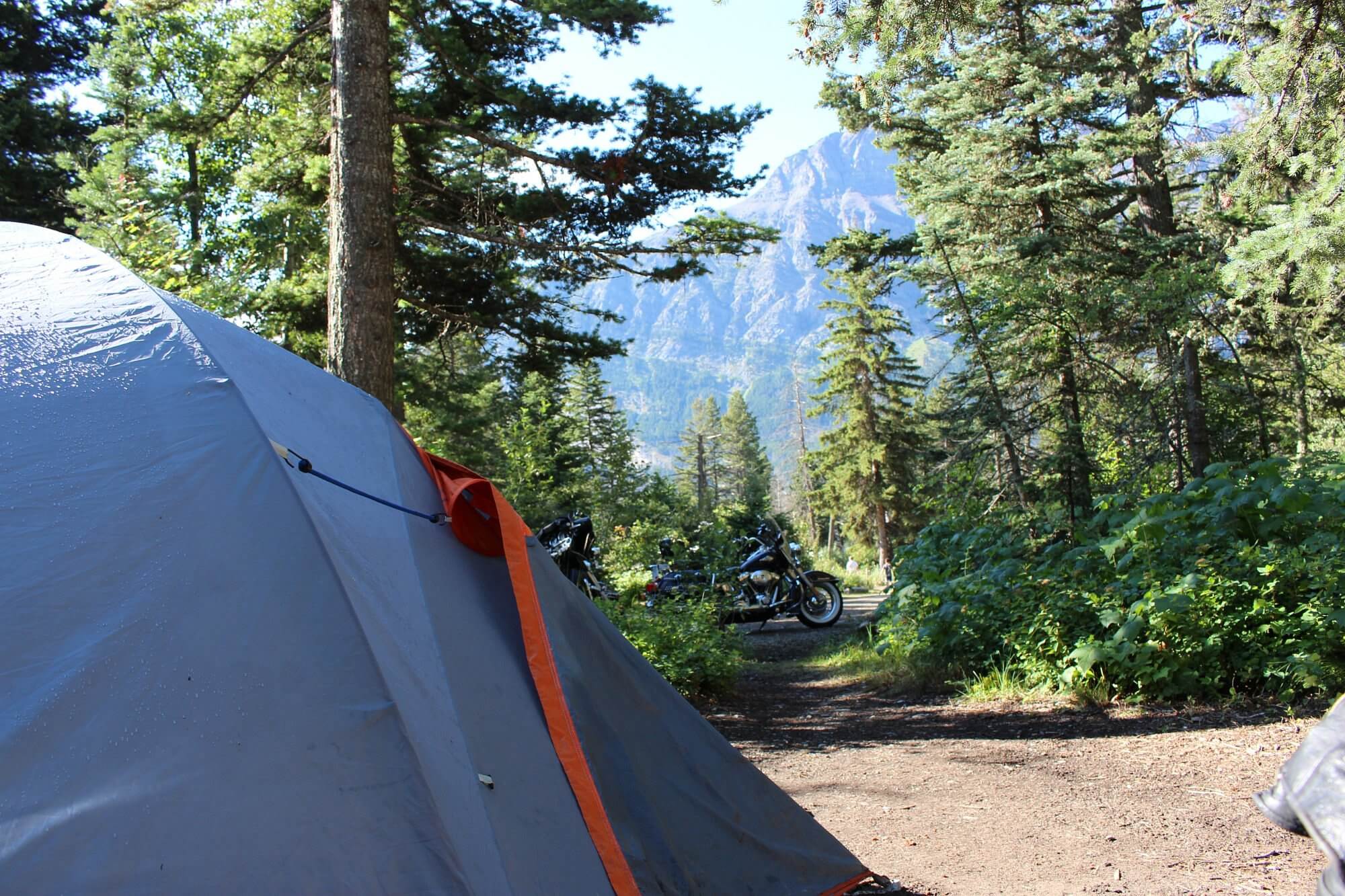
Rising Sun Campground offers campers beautiful sunrises in the morning with Red Eagle Mountain as a backdrop, and a convenient base camp to many day hikes east of Logan Pass.
Choose from an open site for cool breezes, or set up your shelter among the trees for shade and privacy. We recommend the outer spots for the best views and vibe, as the sites are closely packed, though on the outer edge you might also get a visit from some wildlife – rangers chasing bears out of camp are a common sight!
Total Sites: 84, each accommodating up to eight people and two vehicles, where space is available (maximum two tents per site). Sites can accommodate RVs or truck and trailer combinations of up to 21 feet.
Wheelchair Access: 1 campsite (#7).
The campground offers seasonal accessible flush toilets, trash/recycling collection, on-site staff, a camp store, an amphitheater for ranger talks, and food storage lockers. There is a seasonal dump station, drinking water, and coin-operated showers, and in summer you can expect the shower lines to be long (so maybe just “shower” soap-free in St Mary Lake across the road!)
There are picnic tables and fire rings, and you can use dead wood found on the ground for fuel – or, if there’s a fire ban on, take the park shuttle to the town of St Mary for pizza.
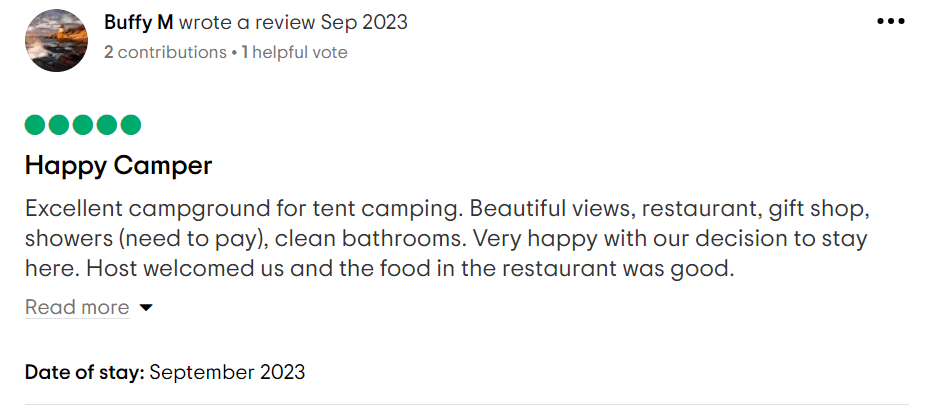
Boat tours on St. Mary Lake are located near Rising Sun Campground, and a free shuttle service is available. Otokomi Lake trailhead is right next to the campground.
Rising Sun Campground is usually open from the beginning of June through the beginning of September and operates on a first-come, first-served basis, so make sure you arrive early afternoon at the latest to get a spot.
Fee: $20.00.
Where: Just west of St. Mary, halfway along St. Mary Lake, adjacent to Rising Sun Motor Inn.
Reservation-Only Campgrounds
The majority of Glacier’s campgrounds are available by reservation only. Sites must be reserved ahead of arrival on Recreation.gov. NOTE that in all campgrounds below, there is no Wi-Fi, and cell service is almost non-existent.
Advanced reservations are required for all the campgrounds below.
7. Apgar Campground
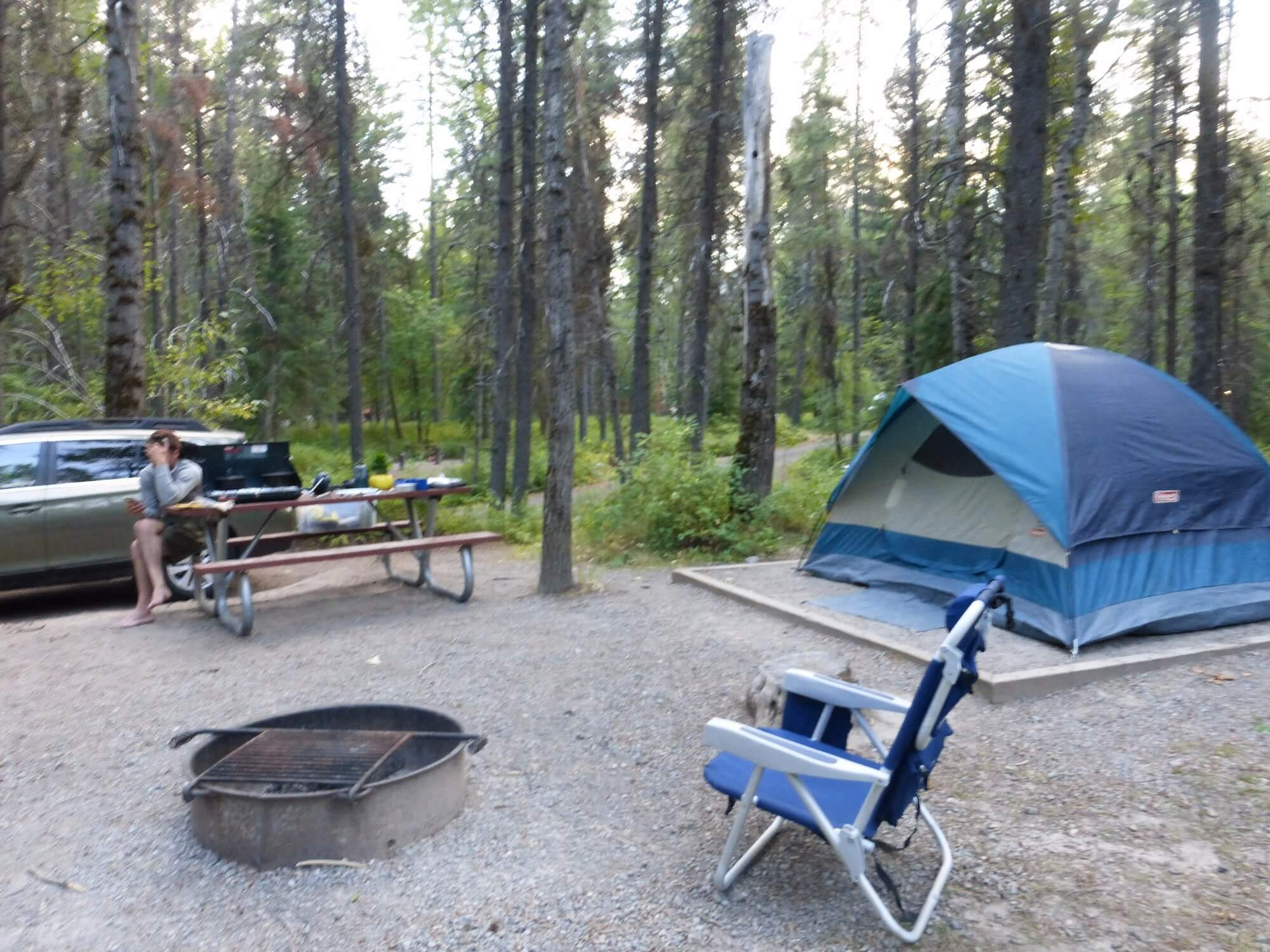
Status: Open
Apgar Campground is a quiet and clean place to stay, ideal if you’re biking the Going to the Sun Road. It’s also a great base for kayaking on Lake McDonald, which is just steps away.
While there are a few sites suitable for tents, the campground tends to attract a lot of RV owners, which can make it noisy. The warm showers are one of the highlights here, though you can expect lines in summer!
Total Sites: 194, each accommodating up to eight people and two vehicles, where space is available (maximum two tents per site). 25 sites can accommodate RVs or truck and trailer combinations of up to 40 feet.
Wheelchair Access: 2 campsites (C152, C122).
The campground offers seasonal and accessible flush and pit toilets, and year-round trash/recycling collection and food storage lockers. There is a seasonal camp store, an accessible amphitheater, dump station, free showers and drinking water, and staff are on-site during summer.
There are picnic tables and fire rings, and you can use dead wood found on the ground for fuel.
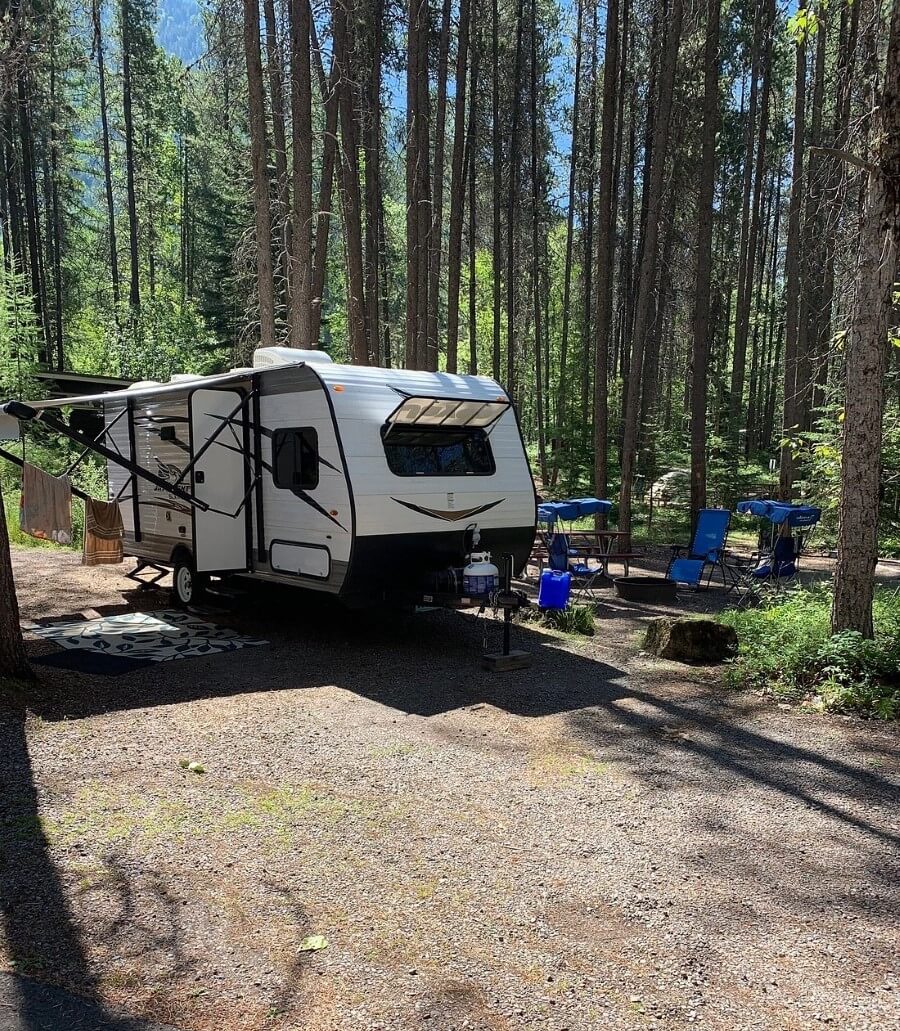
Fee: Summer (April 25–October 3): $23.00, Primitive camping status (October 4–31 and April 1–April 24): $10.00, Winter status (November 1–March 31): Free with a valid entrance pass.
Where: 1 mile northeast of the west entrance near West Glacier.
8. Avalanche Campground
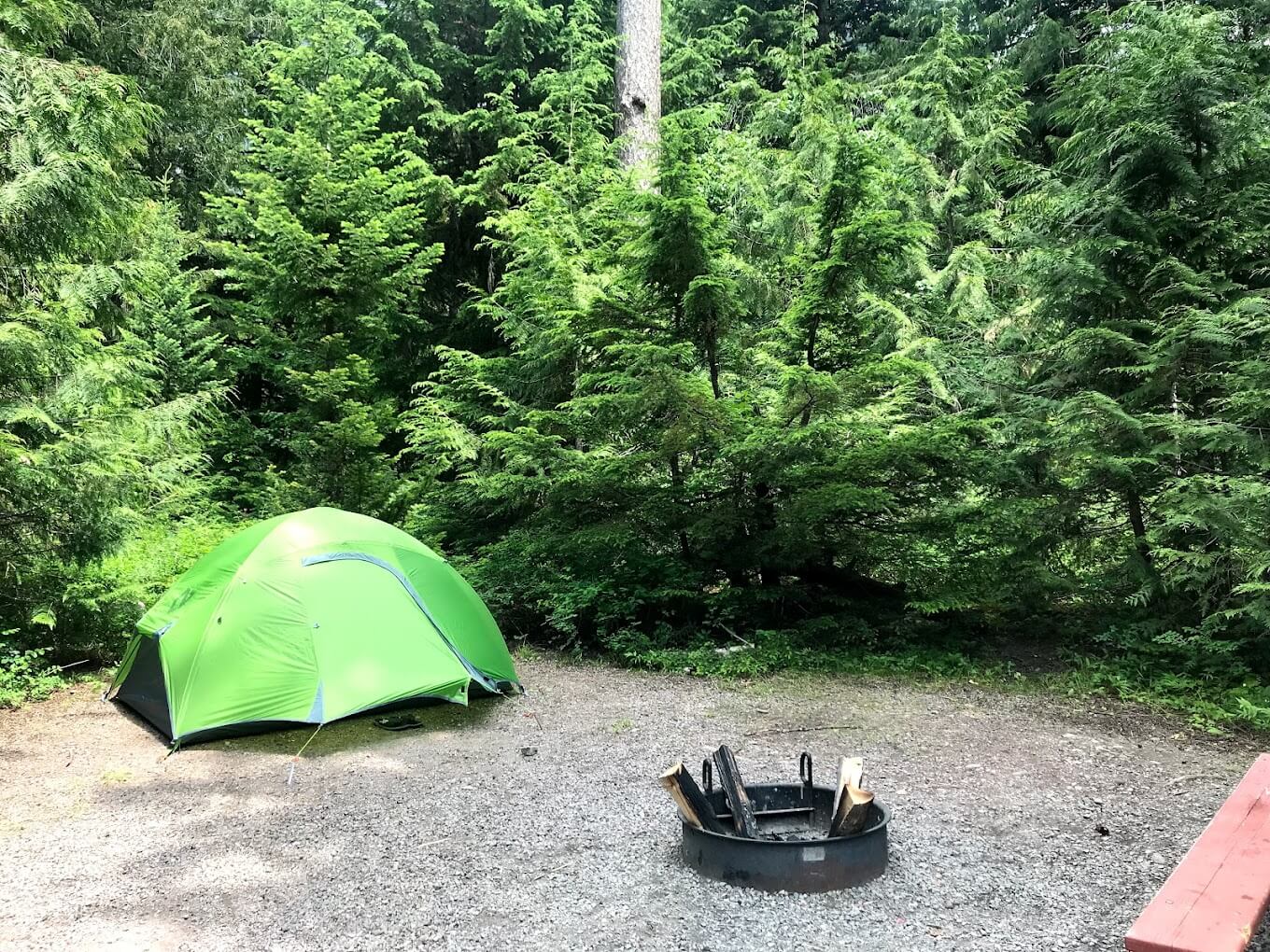
Avalanche Campground is located in one of the most popular sections of Glacier National Park west of the Continental Divide. The campground serves as a nice base for both tent and RV campers and is nice, wooded with lots of shade. An added bonus is privacy – the spots are well spaced out.
The Avalanche Lake trail is easily accessible from the campground, and the hike to Avalanche Lake and the lake itself are beautiful and definitely more than worth the effort. Bring your hiking boots and binoculars- the two most popular day hikes from Avalanche promise spectacular scenery and glimpses of birds and wildlife that inhabit the area.
The Trail of the Cedars, a 0.7-mile accessible (wooden boardwalk/polymer pavement) trail through old growth cedars, starts at the Avalanche Picnic Area.
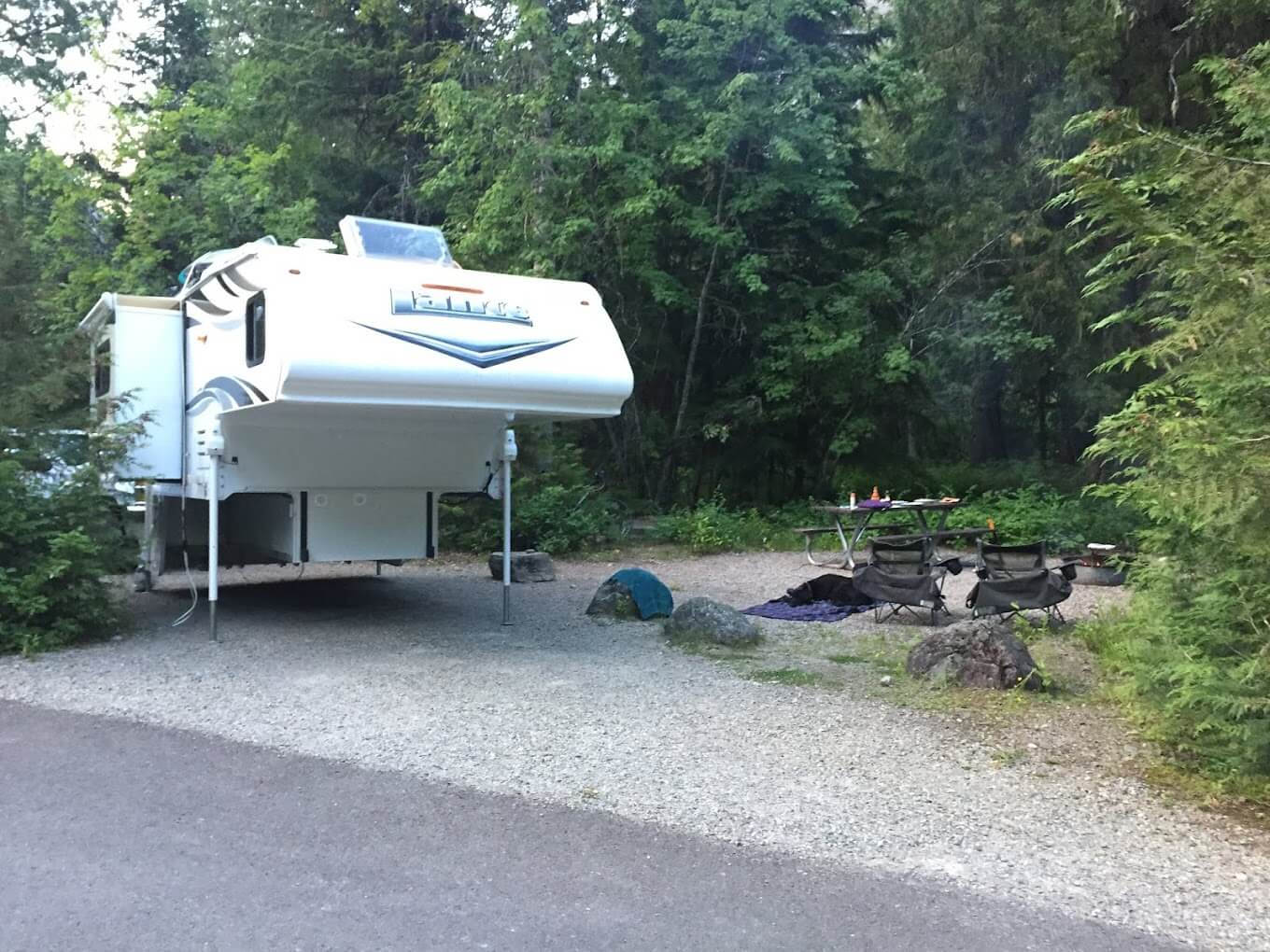
Total Sites: 87, each accommodating up to eight people and two vehicles, where space is available (maximum two tents per site). 50 sites can accommodate RVs or truck and trailer combinations of up to 26 feet.
Wheelchair Access: 1 campsite (A33).
The campground offers seasonal, accessible flush toilets, seasonal trash/recycling collection and food storage lockers. There is a seasonal amphitheater for interesting ranger talks, a seasonal dump station, and drinking water but no showers. Staff are on-site during summer.
There are picnic tables and fire rings, and you can use dead wood found on the ground for fuel.
Avalanche Campground’s summer season typically runs from mid-July to mid-September.
Fee: $20.00
Where: On Going-to-the-Sun Road, 15.7 miles from West entrance, 34 miles from the St. Mary entrance.
9. Fish Creek Campground
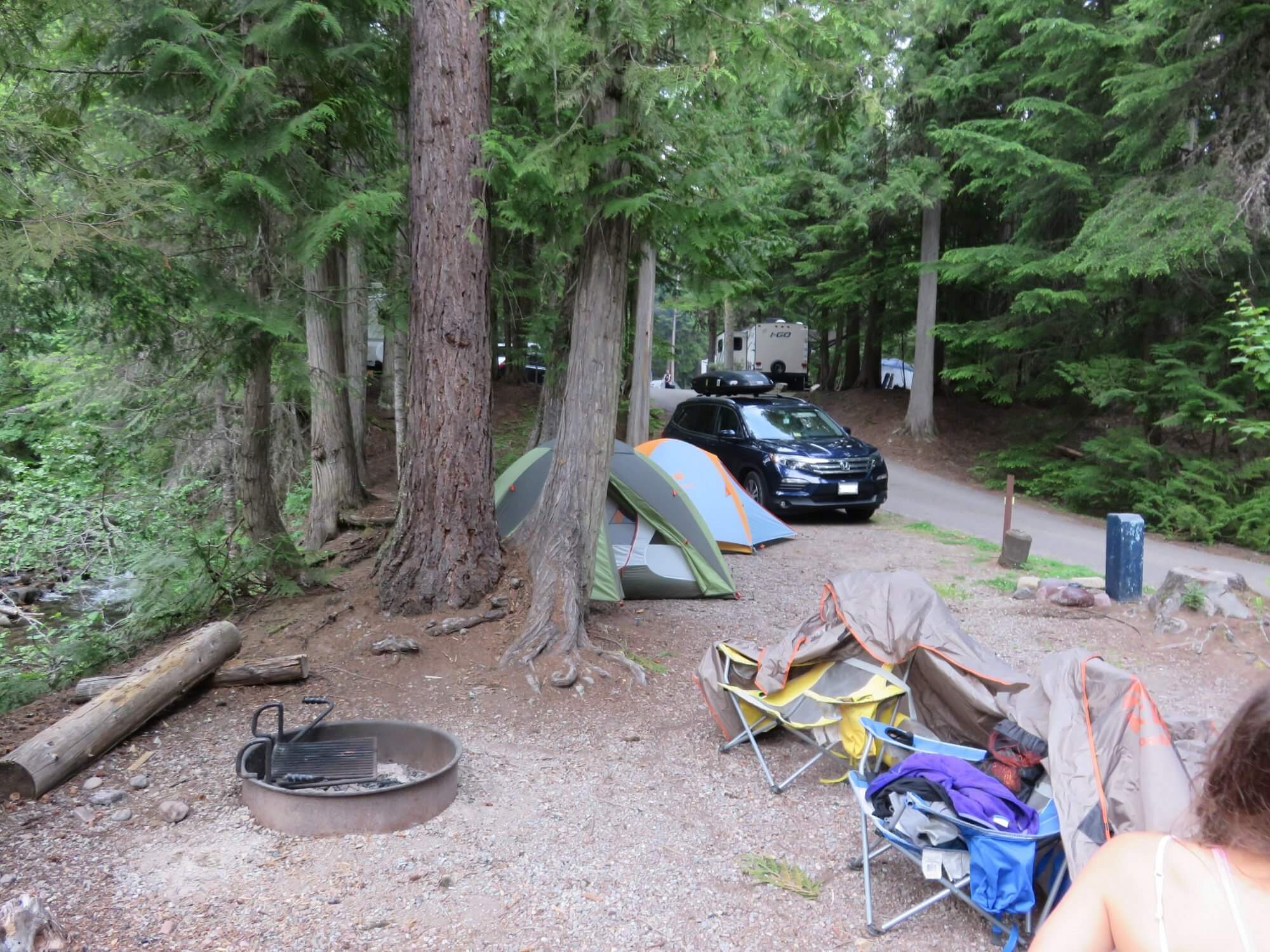
Fish Creek is the second largest campground in Glacier National Park. Sites there are surrounded by trees, which provide shade and some privacy to both tent and RV campers. Some sites, though not directly on the shore of Lake McDonald, offer lovely filtered views of the lake.
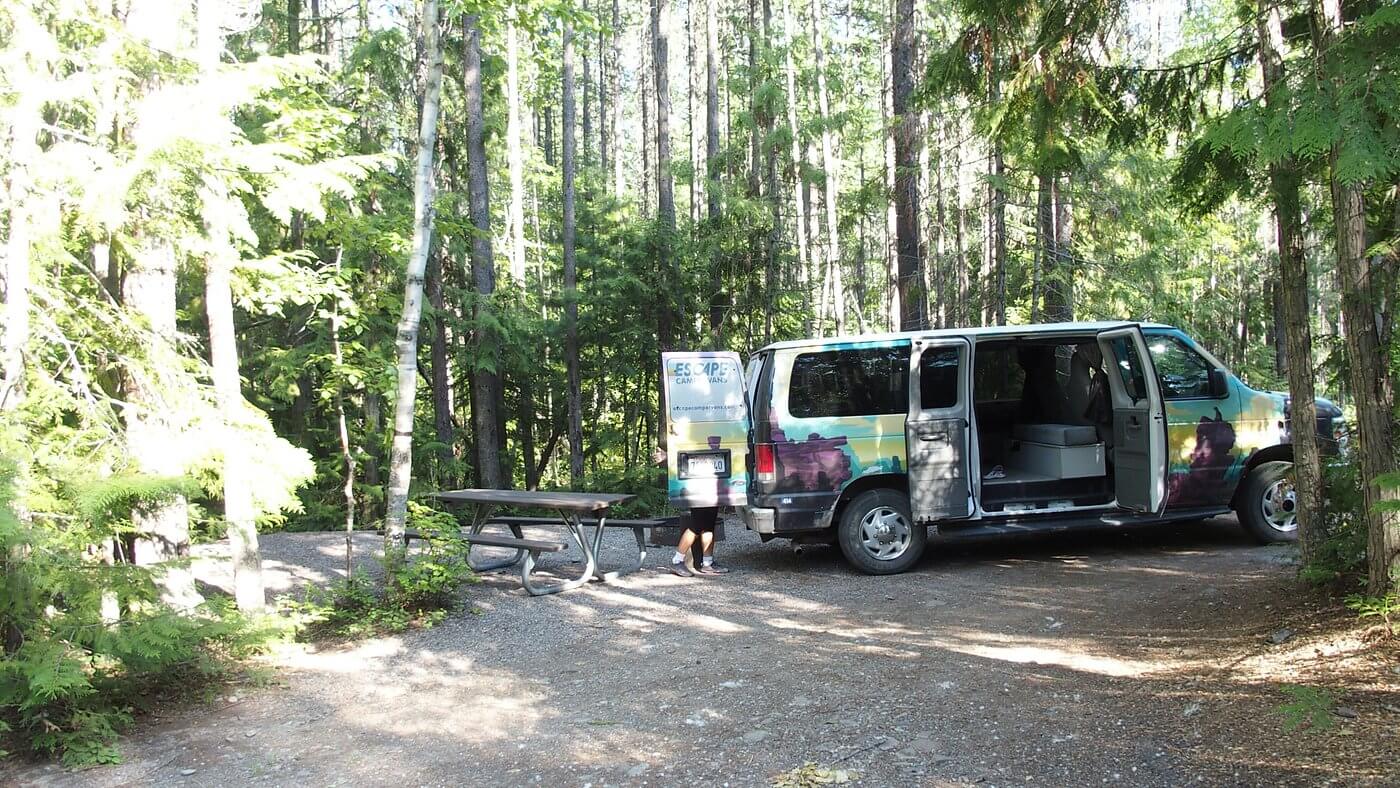
Sites at Fish Creek offer easy access to the lakefront and some incredible views. Some are spacious, others closely packed – read on for some tips on which to book! While there, take advantage of the evening ranger talks, and during the day make the most of the water, or hike the Rocky Point trail.
Total Sites: 178, each accommodating up to eight people and two vehicles, where space is available (maximum two tents per site). 18 sites can accommodate RVs or truck and trailer combinations of up to 35 feet.
Wheelchair Access:
Loop A: A08 (35 feet), A10, A12, A34 (24 feet)
Loop B: B68 (35 feet), B65 (27 feet)
Loop D: D158 (27 feet)
Visitor tips: “The sites along the water in Loop D are huge and spaced out – just gorgeous. Loop C is a no-generator loop and quite a few sites there could hardly fit a backpacking tent, and even then on a slope. Some of the sites in C are on the water and have decent room and some are on the water and pretty small. We were in Site C141 and managed to just squeeze our 10×15 tent into a spot between trees in the back.”
The campground offers seasonal, accessible flush toilets, seasonal trash/recycling collection and food storage lockers. There is a seasonal amphitheater for interesting ranger talks, a seasonal dump station, and drinking water and free hot showers. There are two ADA accessible unisex shower stalls available. Staff are on-site during summer.
There are picnic tables and fire rings, and you can use dead wood found on the ground for fuel.
Fish Creek Campground’s summer season typically runs from the end of May to the beginning of September.
Rates: $23.00.
Where: Fish Creek Campground is located just off the Camas Road approximately 2.5 miles from Apgar Village on the west side of Glacier National Park.
10. Many Glacier Campground
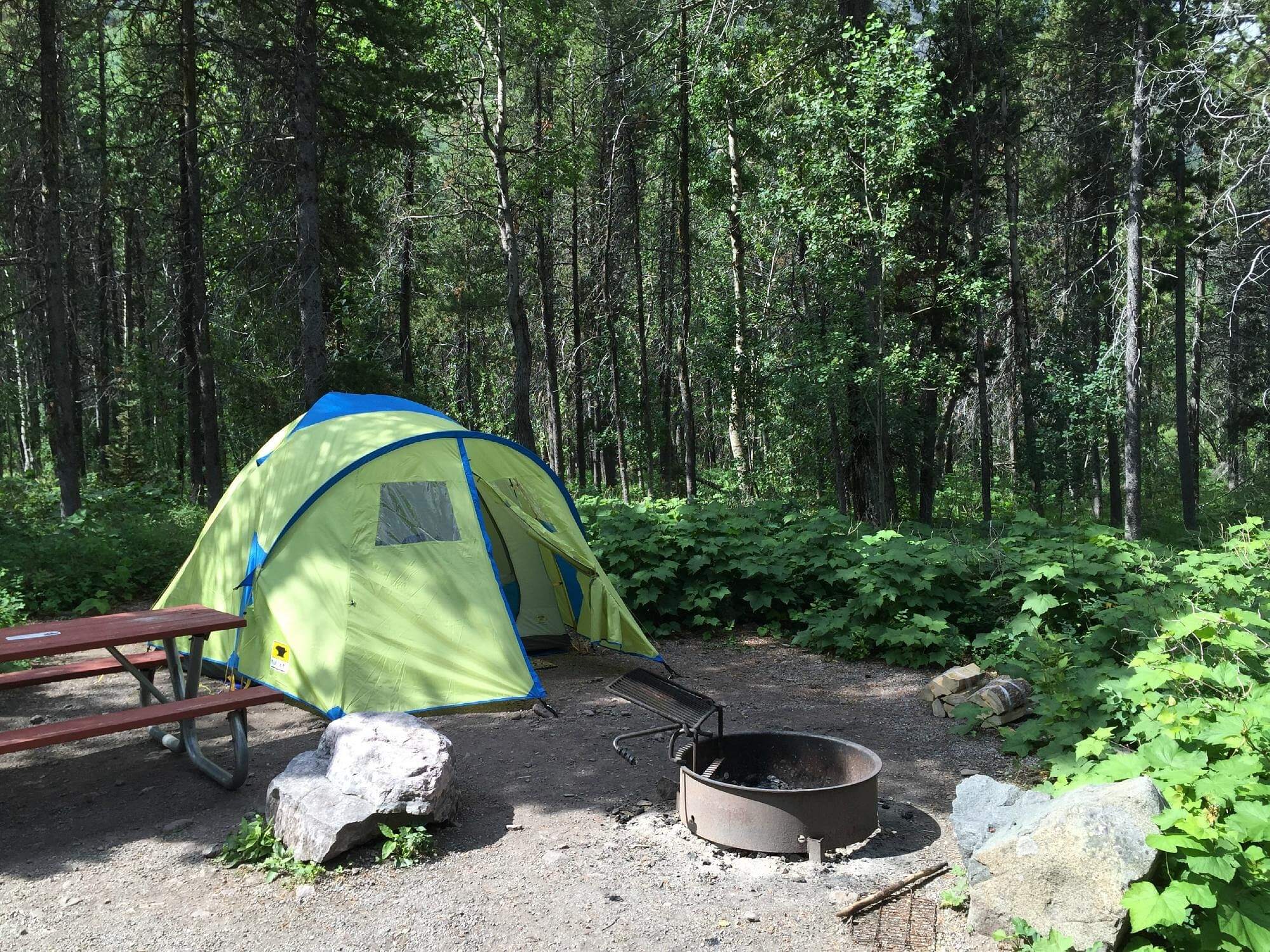
The campground at Many Glacier is one of the most popular campgrounds in Glacier National Park, within a forest of trees and accommodating both tent and RV campers. Take your binoculars with you to better (and safely) spot bighorn sheep, moose, and bears.
Many Glacier is also well-loved for its access to some of the best day-hike trails in the park.
Occasional strong winds will be felt even with nature’s green protection. Pack for cold nights!
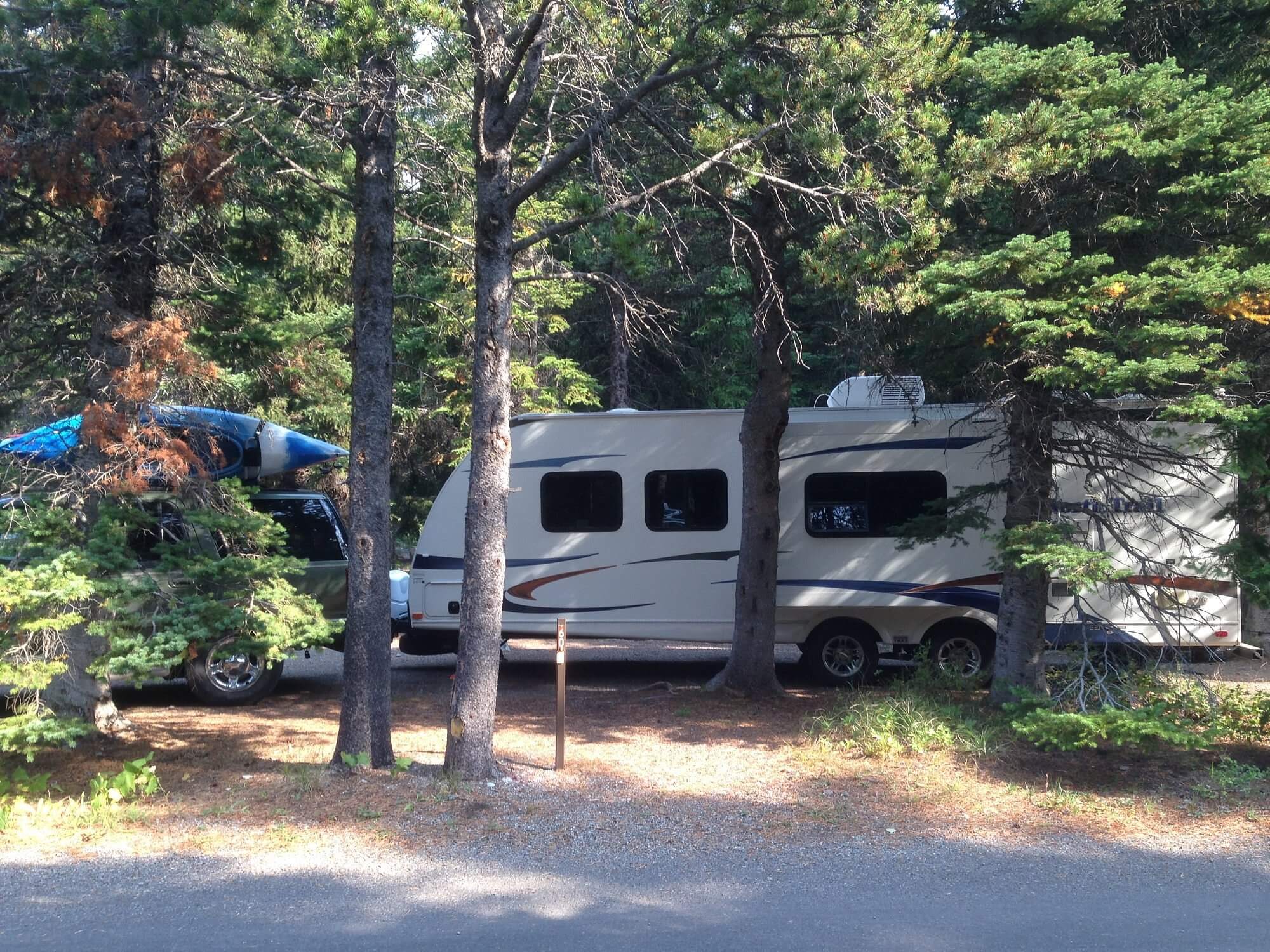
TOTAL SITES: 109, each accommodating up to eight people and two vehicles, where space is available (maximum two tents per site). 13 sites can accommodate RVs or truck and trailer combinations of up to 35 feet.
Wheelchair Access – there are no accessible campsites.
The campground offers seasonal, accessible flush toilets, seasonal trash/recycling collection and food storage lockers. There is a seasonal accessible amphitheater for interesting ranger talks, seasonal camp store, seasonal dump station, seasonal coin-operated showers, and drinking water. Staff are on-site during summer.
There are picnic tables and fire rings, and you can use dead wood found on the ground for fuel.
Many Glacier Campground’s typical summer season is from early June to mid-September. There is a primitive camping season from mid-September to October 31, weather permitting, when no water is available. The nearby Swiftcurrent Motor Inn offers shower facilities with one ADA accessible unisex shower stall.
Rates: Summer $23.00, Primitive $10.
Where: The campground is located at the end of Many Glacier Road near Swiftcurrent Motor Inn. The closest community is Babb, Montana, 12 miles away., while the St. Mary park entrance is 20 miles driving distance away.
11. Sprague Creek Campground
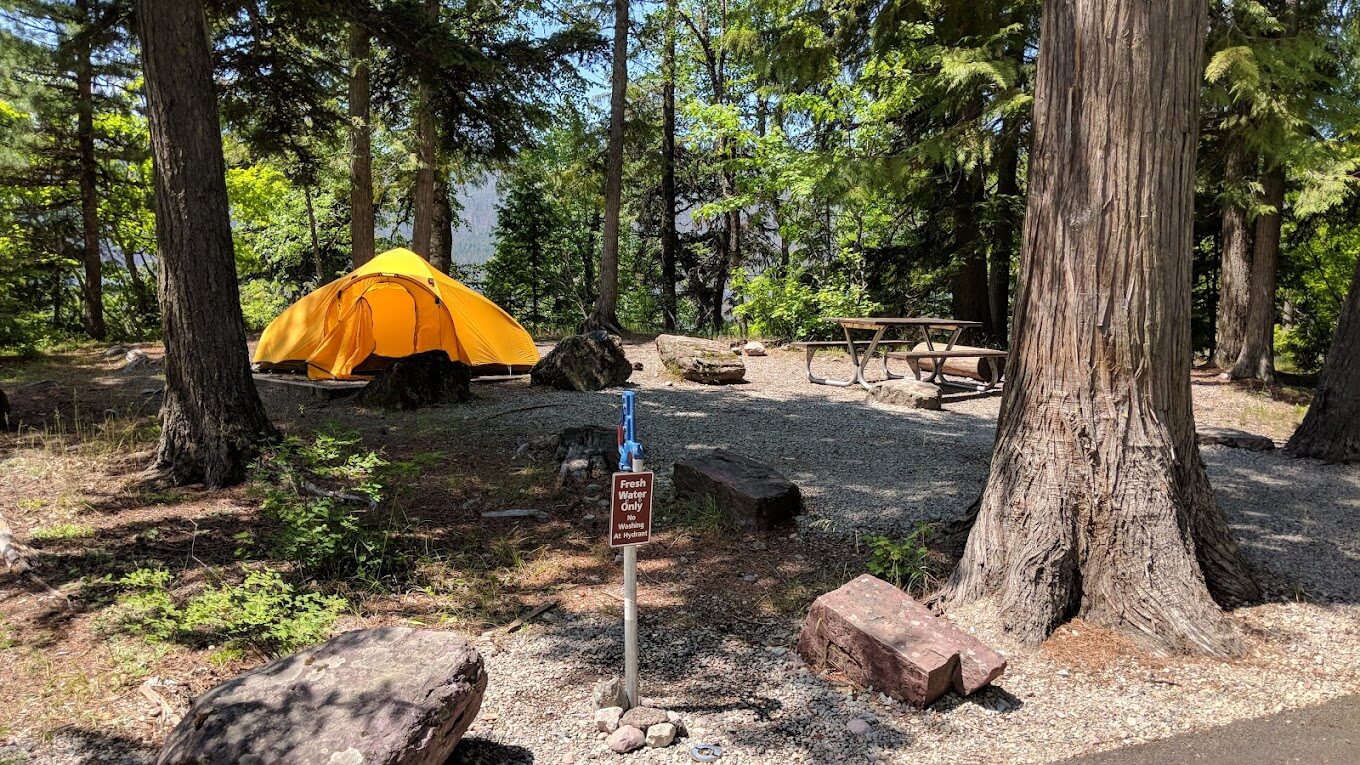
Sprague Creek is a small developed campground located on the northeast shore of Lake McDonald.
Sprague Creek, in our opinion, has the best location of any campground in Glacier National Park, and the best sites, if you can get one, are those with lake views, if you don’t mind having neighbors close at hand. Even without a lakeview site, though, it’s only a short walk to the shore of Lake McDonald. The campground is located within trees, providing shade during warm summers.
TOTAL SITES: 25, each accommodating up to eight people and two vehicles, where space is available (maximum two tents per site). No RVs or trailers over 21 feet are allowed.
Wheelchair Access: 1 campsite (S01- 25 Feet).
The campground offers seasonal, accessible flush toilets, seasonal trash/recycling collection and food storage lockers. There is a seasonal dump station and drinking water but no showers. There are no staff on site.
There are picnic tables and fire rings, and you can use dead wood found on the ground for fuel.
There is a short accessible path on the north end of the picnic area that leads to the lake.
Sprague Creek Campground is usually open from mid-May to mid-September.
Rates: Summer $23.00.
Where: Sprague Creek campground is located just off Going-to-the-Sun Road, approximately 9.5 miles (15.2 km) from the West Entrance of the park.
12. Two Medicine Campground
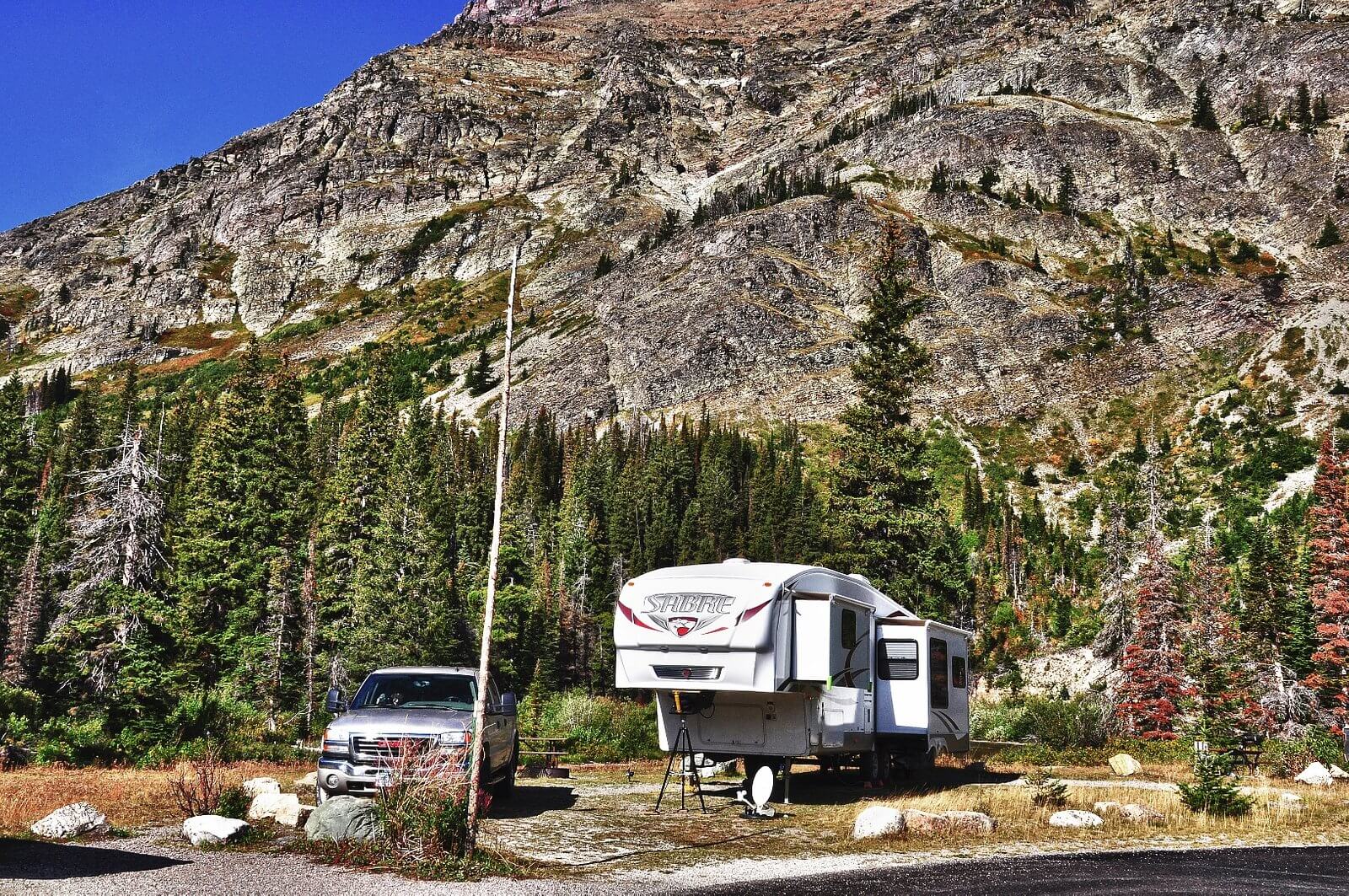
The developed Two Medicine Campground is located on the east side of Glacier. You can choose from sites shaded by trees, offering some privacy from other campers, or make a grab for the beautiful (but occasionally windy) waterside spots. Either way- the mountain scenery is breath-taking. Take some time to go swimming, kayaking, boating, hiking…And don’t miss the campfire talks the Park Rangers put on in the evening.
TOTAL SITES: 100, each accommodating up to eight people and two vehicles, where space is available (maximum two tents per site). 10 sites can accommodate RVs up to 35 feet, or a truck and trailer combination.
Wheelchair Access – 1 campsite (#20). The amphitheater is not accessible.
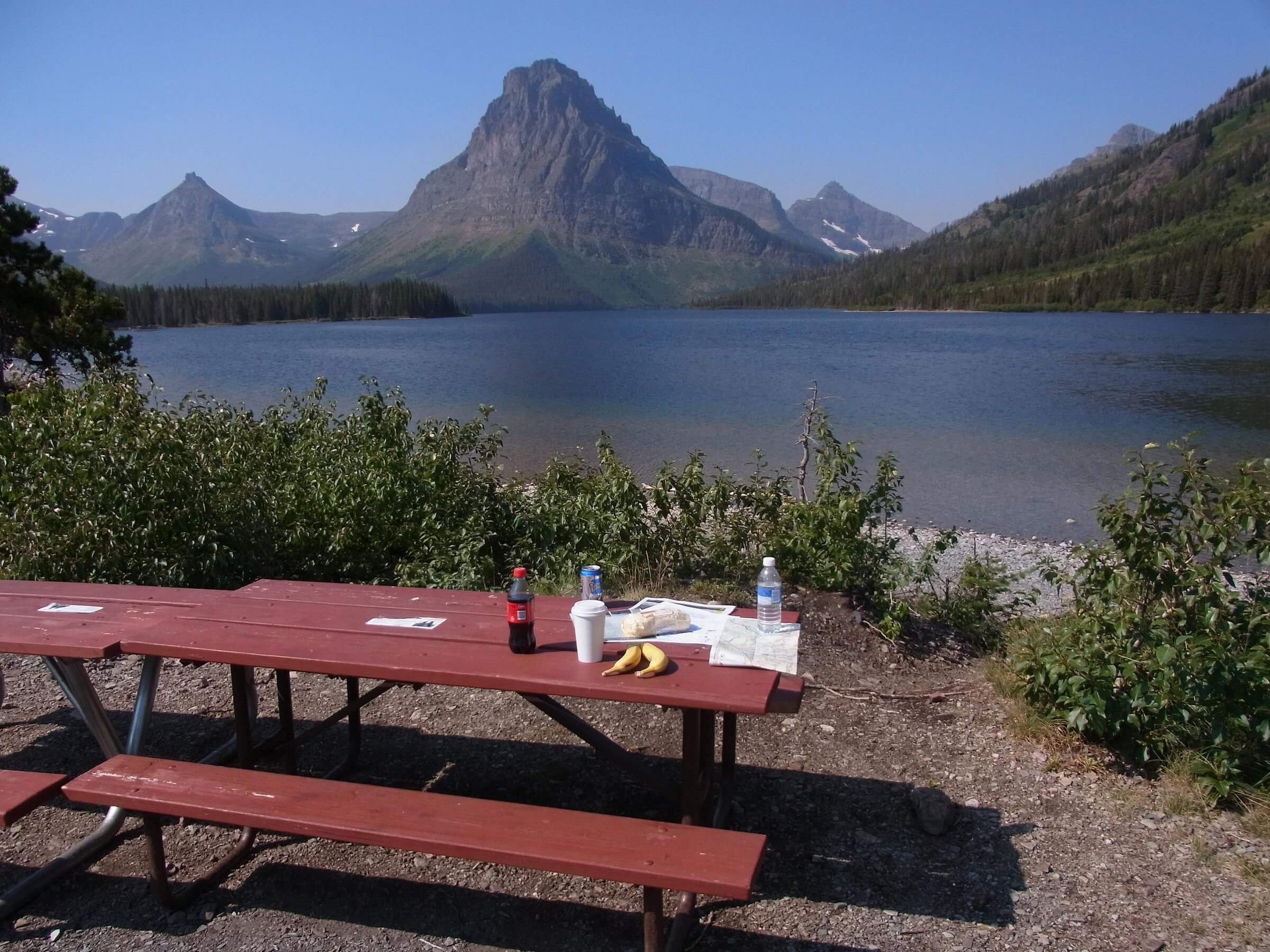
The campground offers seasonal, accessible flush toilets, seasonal trash/recycling collection, a camp store and food storage lockers. There is a seasonal dump station and drinking water but no showers. There are staff on site during summer and rangers run talks at the amphitheater.
There are picnic tables and fire rings, and you can use dead wood found on the ground for fuel.
Boat tours and Red Bus tours can be taken nearby, and there are numerous day hiking opportunities available, including a handicap accessible trail to Running Eagle Falls.
Two Medicine Campground’s summer season is typically from late May, or early June, to mid-September. There is a primitive camping season from mid-September into October, weather permitting. Be ready for cold nights at high elevation!
Fee: Summer $20.00, Primitive $10.00.
Where: Two Medicine Campground is located approximately 13 miles from the small town of East Glacier Park on the Blackfeet Indian Reservation.
The Takeaway
Get planning to pack up your RV or camping gear and head out to Glacier National Park for the weekend, whether it’s primitive solitude with lakeside views you love best, or fun on the water with other happy campers and a hot shower at the end of the day. Whichever floats your boat, be sure to dress for changeable weather, take along drinking water if necessary, invest in some bear spray (and learn how to use it!), and take your binoculars and camera along for some incredible wildlife spotting!
What Else Can I Do In Montana?
We recommend checking out some of the state’s year-round hot springs to warm you up after your weekend exploring, and to soothe those aching muscles. We’ve compiled listings of the best free hot springs in Montana, Montana’s top commercial hot springs resorts to head to, and have also looked into the best hot springs within 100 miles of Missoula! And if you happen to be near Billings on the way to or from Glacier National Park, here are our recommendations for things to keep you and your loved ones busy in Billings! Enjoy!
Disclaimer
While we at Traxplorio do our very best to give you the most up-to-date information, we always recommend you do your own research before you travel, and check conditions and prices with official sites. Thanks for understanding, and enjoy your adventure!

